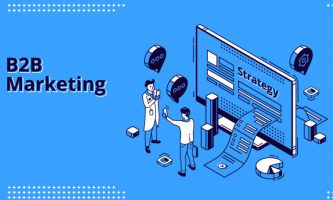How To Design Effective Custom Business Store Signs

attention-grabbing custom business signs are key to driving up sales and keeping customers coming back. By taking a few simple design principles into account, you can create store signs that effectively communicate your message and brand identity.
In this blog post, we’ll explore some tips on how to design eye-catching and effective business signs for your store. Stay tuned for some great advice on custom sign design!
Define Your Target Audience
Our store signs are specifically targeted to a particular audience that blends a contemporary style sense with practical sensibilities. Our designs appeal to modern consumers who have an eye for both quality craftsmanship and fashion-forward motifs.
Whether a homeowner looking to make a statement in their garden or a business owner seeking detailed signage for their retail space, we cover all preferences. With our vast options ranging from traditional wooden signage to neon light displays, there is something for every shopper’s needs.
Keep It Simple
Signage is one of the most effective ways to get your message across in a concise and meaningful manner. As such, it is important to ensure that you are not trying to cram too much information onto the sign itself. By keeping things simple and sticking to one or two key points, you can easily capture the attention of viewers without overwhelming them with too much detail.
Additionally, this will help to make your message easier to comprehend and may even make it more likely that viewers retain the information. Overall, remember that brevity is best, and opt for simplicity when creating signage – your audience will thank you for it!
Use Durable Materials
When making any investment in outdoor materials, selecting high-quality is always essential. Not only will it provide better protection from the elements and last longer, but it may also save you time and money down the road by not having to replace it anytime soon. Quality materials are still a great value over cheaper options because they consistently offer a higher level of performance that can’t be easily matched.
Make sure to look for signs of extreme durability like water resistance or UV protection when deciding which materials are best for your project or purchase. With proper care and maintenance, using high-quality materials should ensure your purchase is strong enough to withstand the elements and remain in good condition for many years.
Be Creative With Design
When it comes to designing a visually stunning and effective piece, it is important to use creative elements such as color, letters like cast metal letters, Channel letters, Gemini letters, etc, shapes, and images. Colors can be used to create a mood or atmosphere that will draw attention and give an immediate impression of the project.
Meanwhile, shapes and lines help bring focus, guide readers’ eyes, and make the design stand out. Images also help give the piece a unique look by adding texture and dimension. Understanding how these different design elements work together is essential for creating something truly eye-catching.
Get Others’ Input
When you create a store sign design, it’s important to get the opinion of others before you finalize anything. Get input from family, friends, and neighbors – these are people who know you and will provide an honest assessment of how your design looks. You might even be surprised how useful their input is when it comes to color choice, lettering size, and placement of elements on the design.
Remember, an effective store sign not only stands out but also communicates your business message clearly – two key ingredients that can come together with the help of feedback from those around you! Taking the time to get input from others can definitely give your design a greater impact than if done in isolation.
Conclusion
Store signs can be an invaluable marketing tool that helps people discover the unique products and services your business offers. To ensure they serve their purpose, it’s important to find the right balance between aesthetics, practicality, and creativity. Make sure you define your target audience and use colors, shapes, and images that will catch their eye. Quality materials should also be used so that your sign is long-lasting and weather-resistant. Finally, don’t hesitate to seek input from different sources; family members or friends may have great ideas that could make your store signs stand out. With these tips in mind, designing appealing signs for your business is within reach!
Read Also:













